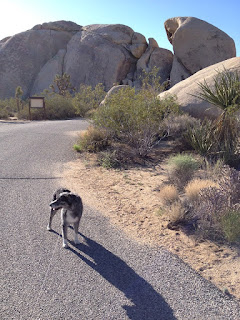Crayolas versus Museums, an entirely unfair comparison.
I have been increasing my pencil collection. I know...it's a sickness. They are so lovely and, just as I have done with vintage sewing machines, I keep wanting to compare models to see which one I love the most. To that end I cracked open a new blank journal and started making swatches of each set of pencils that I have. Then I decided to sketch an apple with each set. Apple sketching gave me information that swatches did not reveal. And there is a certain addictive quality to sketching fruit. Or maybe that's just part of the sickness...
Journal:
Leuchtturm1917 blank 180gsm sketchbook (a gift, thanks so much!). Description - "Smooth paper made of high fibre cotton, ideal for classic sketching with pencils, charcoal, chalk, pastels, felt pens and markers." I consider the tooth to be moderate, but enough texture to be able to build pencil color and enough weight of paper to accept light washes. I tried spraying some pages to activate watercolor pencils. The paper does not like that, the water soaked through to the back page. But there is no show through or bleed-through with waterbrush activated pencils or fountain pens. The paper does soak up the water, so not much sizing. I bought two more of these journals when I saw them on sale at Blick.
 |
Crayola Watercolor Pencil Swatches
Columns:
1) Color name
2) light application
3) heavy application
4) "licked" application |
First up in my comparisons, the
Crayola Watercolor Pencils. This was my first set of watercolor pencils and the cheapest. I don't hear a lot of love for Crayola pencils so I wanted to see how they would compare with my expanding (and increasingly expensive) pencil collection. The pencils have round barrels, painted to match the lead color, with gold lettered color names but no color numbers. The leads are 3.3 mm diameter (compared to Museum aquarelles with a 3.8mm diameter).
Price: eBay, $11 for set of 24 (cheaper from Walmart or Amazon!)
Swatches: the first column square was lightly covered with pencil, the second column square was covered with pressure. Both squares were swiped with a medium sized waterbrush. A third swatch column was the "licked" effect from stroking the lead with a waterbrush and then transferring the color to the paper.
 |
Crayola Watercolor Pencils- blending colors from a triad.
Triad: Magenta, Sky Blue (Cyan), Yellow |
As with many of my collections, there was only one shade of yellow in the Crayola 24 pack, which appeared to be a warm yellow. I tried out two primary triads with different blues and reds but the same yellow. My apple sketch was made with the Magenta, Cyan (Sky Blue), Yellow triad.
 |
Apple to Apple:
Crayola Watercolor pencils on top
Caran D'Ache Museum Aquarelle pencils on bottom
-Crayola pencils are much lighter in application and
weaker in pigmentation than the CdA Museum pencils. |
The apple test: With the Crayola pencils, the amount of pigment seemed light even after layering and blending. This is most apparent in the cast shadow, which was layered from all three colors. Then I sketched the same apple with a
Caran d'Ache Museum Aquarelle triad, the most extreme contrast in creaminess, pigment, and price in my pencil collection. My scanner inexplicably brightened the Crayola apple so the contrast was not as obvious, so I took a picture with my iPhone to get a better comparison. The apples were water activated with a waterbrush, but the cast shadows were left dry to get a feel for the amount of paper tooth left showing after layering.
Results:
The Crayolas blend colors nicely and swatch well, at least on this paper. But when sketching with many light layers, it took quite a bit of time to get good coverage and the depth of color was less than other pencils I compared. This was my first apple and I am thinking of trying again as practice has probably changed my technique. By comparison, the Museum pencil sketch took less than half the time, but twice the pigment and more than four times the price (eBay, 12 for $27). As would be expected with such a creamy pencil, the detail in the Museum sketch is lower.
Recommendation- Crayola watercolor pencils work well enough for many casual applications. The pencils themselves sharpened well, with few broken leads (unlike the dry Crayolas that I have). I have not yet compared the dry Crayolas with the watercolor, that may be the next apple experiment.
The price point is excellent and the pigment moves around pretty well compared to some of my other sets. By that I mean, when I swipe a swatch I can transfer a good amount of pigment to the adjacent paper. The application is waxy more than creamy but the color blending was acceptable to me. These are the pencils that reside on my kitchen table for quick sketches and to be used by anyone who wants to doodle. My more pricey sets are kept in zipped pencil cases squirreled away in the Pencil tote.
Warning: don't go any further than these if you don't want to be sucked down the rabbit hole of art supply acquisition!!
Stay tuned for more fruity adventures!


































